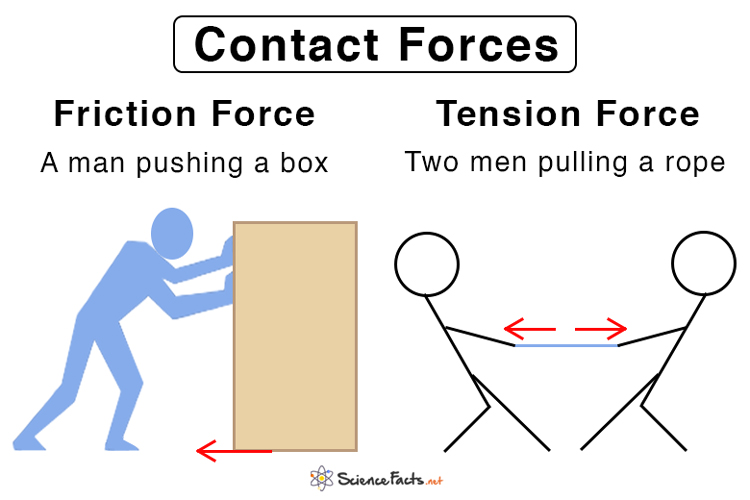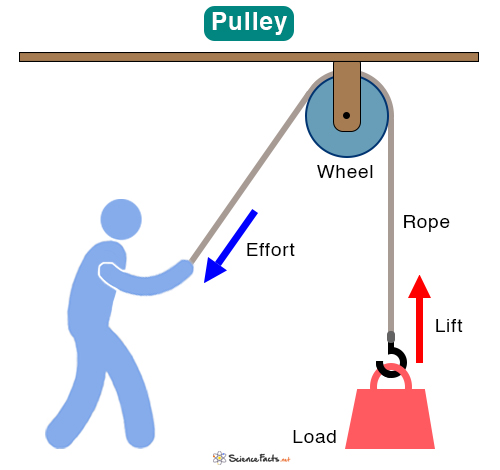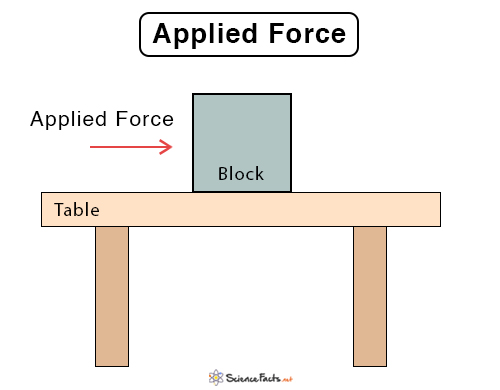Elasticity
Elasticity is the property of a material that allows it to return to its original shape after being deformed. When a force is applied to an object, it deforms, altering its shape. If the object is elastic, it will return to its original shape once the force is removed. Such behavior is known as elastic deformation.
An example of elasticity is stretching a rubber band. When a rubber band is stretched, it deforms. When the force is released, it returns to its normal size.
Elasticity and Atomic Structure
Elasticity is connected to the arrangement of atoms and the forces between them in a material. In solids, atoms and molecules are held together by interatomic forces, which act like tiny springs. When a material is stretched or compressed, these atomic bonds deform but try to return to their original positions once the force is removed. The strength and flexibility of these atomic bonds determine a material’s ability to return to its original shape.
Elastic Deformation in Different Types of Materials
The way a material responds to elastic deformation depends on its atomic structure. Let us explore how rubbery, ductile, and brittle materials behave under stress.
- Rubber materials, like natural rubber, consist of long, flexible polymer chains. When stretched, these chains uncoil and extend, allowing significant deformation. Once the force is removed, the chains recoil, returning the material to its original shape. This high elasticity makes rubber ideal for applications requiring flexibility and resilience.
- Ductile materials, such as metals, have strong atomic bonds arranged in a lattice structure. When subjected to stress, the atomic planes shift slightly, allowing small elastic deformations. As long as the force remains within the elastic limit, the material returns to its original shape. This property, termed ductility, enables metals like steel and copper to withstand mechanical stress without breaking.
- Brittle materials, including glass and ceramics, have strong but rigid atomic bonds. Unlike rubber or metals, they cannot stretch or deform significantly. Instead, when exposed to excessive stress, they fracture suddenly rather than undergoing gradual deformation. Their low elasticity makes them prone to breaking under impact or tension. This property is termed brittleness.
Key Concepts in Elasticity
1. Stress and Strain
Stress measures the amount of force applied to a given area of the object’s surface. Its formula is:
The unit of stress is Pascals (Pa), where 1 Pascal = 1 Newton per square meter (N/m²).
When force is applied to an object, it deforms. This deformation is quantified by strain, which is given by the following formula:
Strain has no units because it is a ratio. It simply tells us how much an object stretches or compresses compared to its original size.
2. Hooke’s Law
One of the fundamental laws governing elasticity is Hooke’s Law. This law describes how materials behave under stress within the elastic limit. According to this law, stress is proportional to strain.
Where E is Young’s modulus, a measure of the material’s stiffness.
3. Stress-Strain Curve
To understand how materials respond to stress, physicists and engineers use a stress-strain curve. This curve plots the stress along the y-axis and the strain along the x-axis. A few key stages of this curve are as follows:
- Proportional Limit: In this region, stress and strain are directly proportional, and Hooke’s Law applies. The slope of the graph gives Young’s modulus of the material.
- Elastic Limit: The elastic limit is the maximum stress a material can handle while still returning to its original shape.
- Yield Point: The yield point is where a material transitions from elastic (reversible) deformation to plastic (permanent) deformation. Beyond this point, the material will not return to its original shape even if the applied force is removed.
- Ultimate Tensile Stress: As stress increases, the material reaches its ultimate stress point, the maximum stress it can handle before weakening. Beyond this, it may become thinner in one area (necking), making it weaker.
- Fracture or Breaking Point: When a material is stressed beyond its ultimate tensile stress, it reaches the fracture point and breaks. Brittle materials like glass snap suddenly, while ductile materials like steel stretch before breaking.
4. Elastic Constants
Elastic constants describe how materials respond to different types of stress. They help us understand how stiff, flexible, or compressible a material is. The four main elastic constants are Young’s modulus, bulk modulus, shear modulus, and Poisson’s ratio.
1. Young’s modulus measures how stiff a material is when stretched or compressed in one direction. It tells us how much a material resists a change in length when a force is applied. It is given by the ratio of tensile stress to tensile strain.
2. Bulk modulus measures a material’s resistance to uniform compression. It tells us how much a material’s volume decreases when equal pressure is applied from all sides. It is given by the ratio of the change in applied pressure to the resulting volumetric strain.
3. Shear modulus measures how a material resists shape change when a force is applied parallel to one of its surfaces. It is given by the ratio of shear stress to shear strain.
4. Poisson’s ratio describes how a material deforms in response to stretching or compression. When you pull a rubber band, it gets thinner in the middle. When you press on a rubber eraser, it expands outward. Poisson’s ratio is the ratio of lateral strain (sideways change) to longitudinal strain (length change).
Applications of Elasticity
- Bridges and Buildings – Engineers design structures using materials with the right elasticity to handle weight and forces without breaking. Elastic deformation helps prevent cracks and structural failures by allowing materials to flex under stress rather than snap.
- Aircraft and Vehicles – Elastic materials help absorb shocks and vibrations, making transport safer and more comfortable. For example, rubber and composite materials in tires and suspension systems absorb impacts, reducing wear and tear.
- Medical Applications – Artificial implants, such as knee replacements, use elastic materials to match the flexibility of human bones. It ensures that implants can withstand repeated stress from movement without causing discomfort or damage.
- Springs and Shock Absorbers – Used in cars, machines, and furniture to absorb energy and reduce damage. By returning to their original shape after compression, these components help maintain stability and prevent excessive wear.
- Sports Equipment – Tennis rackets, running shoes, and trampolines use elastic materials for better performance and comfort. The elasticity of these materials enhances energy absorption, improving efficiency and reducing impact-related injuries.
- Daily Life – Elasticity is essential for the proper functioning of rubber bands, foam mattresses, and flexible plastic objects. Without it, everyday items like erasers, flexible packaging, and bungee cords would become rigid and less effective.
-
References
Article was last reviewed on Monday, March 24, 2025












